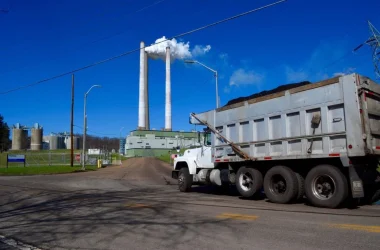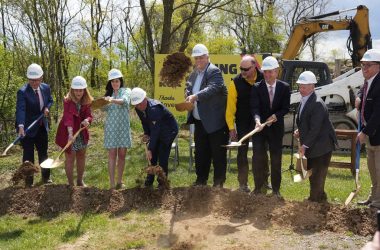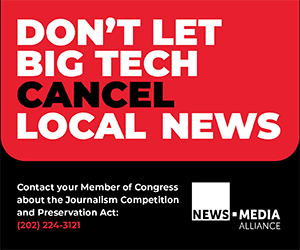By JIM ROSS
The State Journal
HUNTINGTON, W.Va. — It’s hard to make little plans when you’re trying to revive four neighborhoods in a city of nearly 50,000 people.
But redevelopment on a massive size is what the people of Huntington have set out to do with their win in the America’s Best Community competition and the $3 million in prize money that came with it.

(Submitted photo)
Their first job is to ensure that the $3 million is used wisely, Mayor Steve Williams says.
Williams says the ABC competition was for cities to pitch a big redevelopment idea. Huntington pitched four. That was reflected in the “#makenolittleplans” hashtag the city used during the competition.
“People have bought into that vision,” Williams said. “It’s not a matter of if these projects will be developed. They will be developed further than anybody has imagined.”
The plans are indeed big, and many have been in some form of talk or development for 30 years or more.
There’s the demolition of the Northcott Court housing project along Hal Greer Boulevard (West Virginia Route 10), the main entry into Huntington from Interstate 64. The street is a mix of modern medical facilities anchored by Cabell Huntington Hospital and the Marshall University School of Medicine, but it’s also been known for poverty and as the jumping-off point for the illegal drug trade.
There’s redeveloping an old factory in the Westmoreland (Wayne County) neighborhood, turning it into a place for unemployed coal miners to learn new skills and for artists to start businesses.
There’s taking brownfield sites in the Highlawn neighborhood east of Marshall and making them the center of new manufacturing, with perhaps a baseball stadium included.
And there’s bringing truly high-speed internet service throughout the city.
Huntington refused to narrow itself to just one project of the four.
“This town needs all of these at once,” Williams said.
The ABC competition forced the city to compress the planning stages from five or seven years down to three years, he said.
“We’re far beyond the planning stages,” he said. “We’re in the implementation stages.”
The competition
The America’s Best Communities competition was announced Sept. 10, 2014, by Frontier Communications and DISH Network “to to stimulate growth and revitalization in small cities and towns across Frontier’s 27-state footprint.”
One aim of the contest was to identify and invest in innovative ideas that small communities could use to build and sustain their local economies.
The winning community would receive $3 million. Second place would receive $2 million, and third place would receive $1 million.
More than 350 communities submitted applications.
On April 29, 2015, 50 quarterfinalists were announced. Each was awarded $50,000 to continue their planning. Four West Virginia communities made the cut: Huntington, Charleston, Fairmont and Jackson County.
By this time, CoBank and the Weather Channel had signed on as co-sponsors.
On Jan. 13, 2016, the field was narrowed to 15 semifinalists. Huntington and Charleston were on the list, and each city was given until April to prepare another presentation to see who would move on to the final round.
Finalists were announced April 27, 2016. Huntington made that list and received another $100,000 to continue. Sponsors announced cities not making the final round would receive $25,000.
The winner was announced April 19 of this year. Watch parties were organized in Huntington, and celebrations began when the city was announced as the winner.
The official announcement read, “Huntington is poised to become a gateway for revitalization in the Appalachian region, as it executes its Huntington Innovation Project (HIP) Plan, which aims to transform distressed neighborhoods, where the old manufacturing and coal-sector economy has declined, into hip hubs for advanced manufacturing, innovative makerspaces and entrepreneurial incubators, health care businesses and green community improvements.”
Second place went to Lake Havasu City, Arizona, for the city’s Vision 20/20 plan, which focuses on five pillars: Economic development and job creation, education and workforce talent, tourism and place development, water preservation and management, and community engagement.
Third place wet to Statesboro, Georgia. Its revitalization plan focuses on the Blue Mile, an underdeveloped stretch of Main Street that connects its downtown to the Georgia Southern University campus. The strategy aims to reclaim the area as a safe, desirable place to live, regain its economic health and restore its historic identity.
First steps
With $3 million for Huntington to spread among four projects, it would seem each project is allotted $750,000, but that’s not how the city plans to allocate the prize money.
And the city itself did not actually receive the money. The check from the competition was written to the Foundation for the Tri-State. Williams, former City Manager Margaret Mary Layne and Mary Witten Wiseman, the foundation’s executive director, will review applications for the money before it is dispersed.
Layne, who is consulting for the city on the America’s Best Community program, says each project’s developers must continue to justify requests for the money.
Each team in charge of a particular project must apply for funds to be withdrawn, she said. The team must provide a goal and a timeline — “kind of like any grant,” she said. Each project must define itself in a sequence of events and say what sources of funding are needed, if a match is needed and if the money can be used to match other sources, she said.
This process will keep each development team on track, and it will help the city use the money wisely to keep the projects going long after the $3 million has been spent, Layne said.
“We will be looked to because of what we have accomplished through the competition,” Layne said. “We want to succeed. We want to show others how to succeed.
“I anticipate us being very successful with the money and putting it in the right place.”
In the early stages of the ABC competition, the city turned $150,000 into $12.7 million through matches and leverging, she said.
Wiseman said she expects the city to need about three years to spend the entire $3 million in hopes of leveraging it into $260 million.
Momentum
Williams acknowledges that the four keystone projects really aren’t new ones.
There have always been projects in Fairfield, Highlawn and the West End and Westmoreland. Most of them had to do with streetscapes and traffic flow. The new projects in those neighborhoods go beyond the goals of those old ones, he said.
“The operative word is transformation,” he said.
The Northcott Court demolition is a step in transforming that neighborhood. The Fairfield Alliancebrings together the Marshall University president, the Cabell Huntington Hospital CEO and the Marshall medical school dean to discuss neighborhood needs with residents there, Williams said.
The River-to-Rail program in Westmoreland and the WestEnd relies on a wide range of groups to encourage entrepreneurship in that area. The Wild Ramp, a farm-to-market business in what has been an antiques district, has brought a new clientele there, he said.
Any one of the four projects is bigger than anything the city has attempted in those neighborhoods. And there is a fifth project — the redevelopment of Harris Riverfront Park — that was not in the ABC submission, Williams said.
The acronym for America’s Best Community is also an acronym of what Huntington must do now, Williams said. That’s Aspire (to transform), Believe (that it can be done) and Commit (to doing it).
It’s not a question of if these will be done, but when. It’s a contrast to a few years ago when some people liked plans but too many didn’t buy into them, he said.
“This is returned to the city of the 1940s — the We Will City.”
No time to rest
Williams is about six months into his second term as mayor. The city charter limits him to three consecutive terms, so at most he has seven and a half years to bring this ambitious list of projects to fruition. He expects to get them done.
“We don’t have time to waste,” he said. “We have to be able to do several things at once.”
So what does Williams see the ABC award meaning to the city?
“It’s a validation that we can compete with anybody in the country. When you dream big dreams and believe in one another, there’s nothing you can’t accomplish. Now what we have to do is get it done. We have to deliver.”
See more from The State Journal





